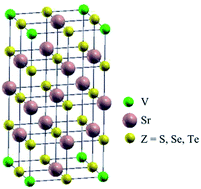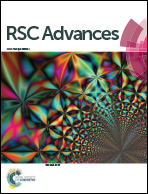A novel theoretical design of electronic structure and half-metallic ferromagnetism in the 3d (V)-doped rock-salts SrS, SrSe, and SrTe for spintronics
Abstract
The exploration of new dilute magnetic semiconductors (DMSs) designed for the development of practical semiconductor spintronics devices has attracted increasing interest in recent years. In the present study, we have investigated the structural, electronic and magnetic properties of strontium chalcogenide semiconductors (SrS, SrSe and SrTe) doped with the transition metal vanadium (V) in the rock-salt structure as Sr1−xVxZ (Z = S, Se and Te) ternary DMSs at a concentration x = 0.125, using first-principles calculations of density functional theory with the generalized gradient approximation functional of Wu and Cohen (GGA-WC). The electronic structure of each compound revealed half-metallic (HM) ferromagnetic behavior with a HM gap and 100% spin polarization. The HM gap is an important parameter in determining the importance of DMSs in spintronics; it is 0.937, 0.585 and 0.245 eV for Sr0.875V0.125S, Sr0.875V0.125Se and Sr0.875V0.125Te, respectively. Therefore, the Sr0.875V0.125Z (Z = S, Se and Te) seems to be a new potential candidate for future spintronics applications.


 Please wait while we load your content...
Please wait while we load your content...